Golden Hour (Sunrise & Sunset) in Singapore
What is Golden Hour?
Golden hour refers to the period just after sunrise and just before sunset when the light is soft, warm and golden. It is also known as the magic hour. During this time, the sun is low on the horizon, casting a warm, golden light that is ideal for both portrait and landscape photography.
What is Blue Hour?
The blue hour is a magical time in photography, usually occurring just before sunrise or right after sunset. It's called the blue hour because the sky takes on a deep, rich shade of blue. During this time, the sun is below the horizon while the atmosphere is lit by the remnants of the day's sunlight, mixed with the light of the stars and the moon.
The light during the blue hour is very soft and diffuse, creating a unique and enchanting atmosphere. This makes it an ideal time for photography, especially for capturing cityscapes and landscapes. The soft light enhances the colours of the sky, while the still-visible stars add a touch of sparkle to the scene.
For portrait photographers, the blue hour can provide a dramatic and moody backdrop for their subjects. The soft light is perfect for creating beautiful, ethereal portraits that stand out from the crowd.
The key to capturing the blue hour effectively is understanding how the light works during this time and adjusting your camera settings accordingly. A tripod is also essential for stability, as long exposures are often needed to capture the ambient light.
Overall, the blue hour is a particular time for photographers and offers a unique opportunity to create stunning and memorable images. Whether you're a landscape, cityscape or portrait photographer, the blue hour is worth exploring.
What is Grey Hour?
Grey hour refers to the period of time between sunrise and sunset, when the light is not yet full daylight but also not full dark. It's also known as the "twilight" period. During grey hour, the light has a cool, greyish tint that can create a moody and dramatic atmosphere in photography. This time can also be used to create beautiful, soft and even lighting for portraits, landscapes, and cityscapes. While it's not as intense as golden hour, grey hour can still be a great opportunity for photographers to capture stunning images.
What is Twilight?
Twilight is the period between daylight and darkness, either in the morning or evening, when the sun is just below the horizon. There are three stages of twilight: civil, nautical and astronomical.
Civil twilight occurs when the sun is between 6° and 0° below the horizon. During this stage, the sky is still bright and there is enough light to carry out outdoor activities without artificial lighting.
Nautical twilight occurs when the sun is between 12° and 6° below the horizon. This is when the sky begins to darken and navigation at sea becomes difficult due to reduced visibility.
Astronomical twilight occurs when the sun is between 18° and 12° below the horizon. This is the time when the sky is completely dark and stars and other celestial objects become visible.
In simple words, twilight is the special time of day when the sun is just below the horizon while its rays illuminate the sky. It's a magical moment that is stunning in a bustling city like Singapore, where the combination of the city's lights and the soft, warm light of the sun create a unique and breathtaking ambience.
During twilight, the light is soft and warm, making it an ideal time for portrait photography. The sky during this time is also often a stunning shade of pink, orange or blue, adding an extra layer of beauty to the scene.
Overall, twilight is a unique and beautiful time of day that offers photographers a unique opportunity to capture stunning portraits and landscapes. Photographers can use warm light to create beautiful and moody portraits that evoke a sense of calm and peace. Photographers who plan to capture the city during this time should get to their location early and be prepared for the light to change soon as the sun rises or sets.
In Singapore, twilight typically lasts for a brief period before the sun rises or after it sets. It's a time when the city's lights are still on while the sun is casting its soft glow on the cityscape. It's a time to slow down and take in the beauty of the world around us.
What is First Light?
First light refers to the time period just after the sun rises or just before the sun sets, when there is still some ambient light in the sky but the sun is below the horizon. During this time, the sky has a soft, warm glow and the colours are often rich and vibrant, making it a popular time for photographers to capture beautiful landscapes and portraits. In some regions, including Singapore, first light can be a short period lasting only a few minutes, so it is important for photographers to be ready and aware of the changing light conditions in order to capture the best shots.
Sunset & Sunrise Time in Singapore
What time is golden hour in Singapore today and the next six days?
| Date | Twilight Starts | Sunrise | Sunset | Twilight Ends |
|---|
Source: https://sunrise-sunset.org/
Note: The times provided by different sources may slightly differ due to various factors such as the location of the observer, atmospheric refraction and elevation. Therefore, it's best to consult multiple sources to get a more accurate time. However, for most purposes, the differences are usually small and not significant.
Golden hour time is around sunrise and sunset, and the exact timing varies slightly on each day and differs more between different countries.
- Sunrise Golden Hour Timing:
The sunrise golden hour in Singapore typically occurs between 7:00 am and 8:00 am. During this period, the light is warm and soft, providing the ideal conditions for capturing stunning portrait photos.
- Sunset Golden Hour Timing:
The sunset golden hour in Singapore typically occurs between 6:00 pm and 7:00 pm. During this time, the light is warm and golden, casting a beautiful, natural glow over the city and making it the perfect time for capturing stunning portrait photos.
Therefore, for a normal (not catching the sun in the background) morning golden hour photoshoot, I would start the photoshoot at around 7am or 7.30am when there will be available soft natural light. Whereas for an evening golden hour photoshoot, I would schedule the time at 4.30pm for a two-hour photoshoot or 5.30pm for an one-hour photoshoot.
Why Golden Hour is Significant for Portrait Photography
Golden hour is a critical time for outdoor portrait photographers as the light during this time is ideal for capturing stunning portraits. The soft, warm light creates a beautiful, natural glow that flatters the subject and enhances their features. The light during golden hour also provides improved contrast, making it easier to capture detailed images that look great even when blown up to a large size.
On the other hand, if the concept of the photoshoot is to create a furious or edgy look, a harsher light may work better. In such a situation, the golden hour may not work so well if the shoot is based on using only natural light.
To visualise the difference, you can take an outdoor selfie during noontime and before sunset (facing the sun). During noon time, the direct sunlight comes from the top. Therefore, the eyes and eyebags will be darker, the nose will appear brightest and the complexion will look worse. Since the sunlight is harsher, the shadows on the face will be sharper and not pleasing to the eyes.
If the location and background are sheltered from direct sunlight, shooting at the non-golden hour is more forgivable.
Why Golden Hour is Significant for Landscape Photography
Golden hour is a magical time for landscape photographers to create impactful pictures. The soft and warm light during this time of day creates a natural glow to enhance the colours and details in the landscape. Shooting near the water with the light will create stunning reflections that add depth and beauty to the scene.
During golden hour, the light provides improved contrast, making it easier to capture detailed images that pop, even when viewed at a large size. Whether you're shooting a breathtaking sunset over the ocean or the warm glow of a sunrise in the mountains, the light during golden hour is just perfect for capturing awe-inspiring landscape photos.
So, if you're a landscape photographer, don't miss your chance to capture some truly stunning images during golden hour. Whether you're a seasoned pro or just starting, the golden hour is an essential part of your landscape photography toolkit. With its warm, soft light and improved contrast, golden hour is a landscape photographer's dream come true.
Golden Hour Portrait Photography in Singapore
What is Golden Hour Portrait Photography in Singapore?
Golden hour portrait photography in Singapore is the art of capturing stunning portraits during the magical hour around sunrise and sunset. The warm, soft light of the sun during this time provides a beautiful, natural glow that enhances the subject's features and adds a touch of magic to your photos.
Sunrise Golden Hour VS Sunset Golden Hour
Sunrise golden hour is also known as morning golden hour. There are usually fewer people around because it's generally difficult for most people to wake up early. Hence, morning is an easier choice for outdoor photoshoots to avoid photobombs.
On the other hand, doing a morning golden hour photoshoot means the entire team has to wake up early in the wee hours to get prepared. The professional makeup artist involved in the photoshoot has to wake up even earlier to prepare and travel over to the location for the makeup, which may cause damages to health. On top of that, transportation fees may be higher in the wee hours. Hence, professional hair and makeup artists usually charge extra for early morning makeover sessions.
The usual problem is lateness, which the entire project would be delayed. There are always other unforeseeable problems. I've also worked with a hair and makeup artist who took excessive time to do the styling work. We started the makeup at around 5am and we could only start the actual outdoor photoshoot at around half past 10 in the morning.
Sunset golden hour is also known as evening golden hour. Usually, do expect more crowds, especially at popular or tourist spots. Generally, more people choose to do photography near the sunset hour due to the hassle to wake up early.
In terms of my photography, I think shooting in the evening golden hour is "safer" because of both the foreseeable and unforeseeable problems. For example, if the team targets to start the photoshoot in the early morning for the best lighting but the photoshoot gets delayed, shooting under the harsh sun would be a great challenge to create flattering photographs.
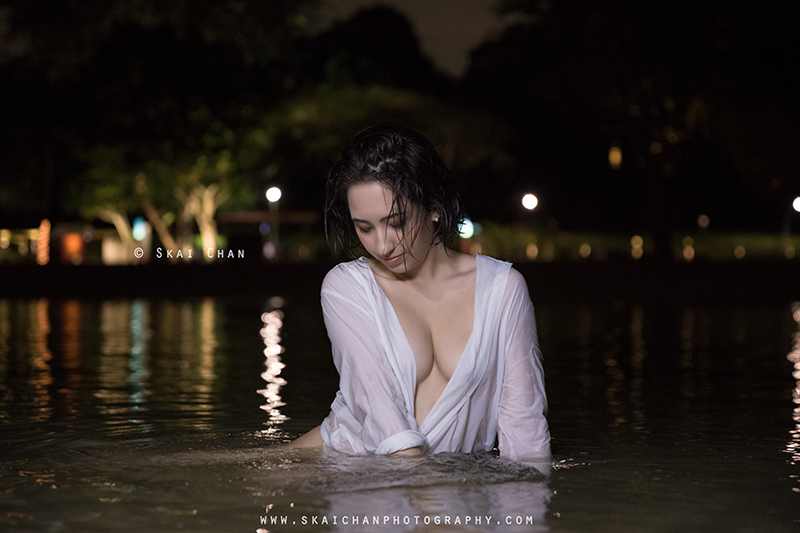
▲ Evening golden hour photoshoot turned into night photoshoot due to delays
On the other hand, if an evening golden hour is being delayed, I can set up my lighting equipment to do a night portrait photoshoot instead, without being challenged by the harsh sun.
Best Locations for Golden Hour Portrait Photography in Singapore
There are plenty of beautiful spots in Singapore that are perfect for capturing stunning golden hour portraits. From the bustling cityscape of Orchard Road to the lush greenery of Gardens by the Bay, you'll find plenty of opportunities to create stunning images that showcase the best of Singapore.
Overall, you might want to explore the following places in Singapore for your golden hour portrait:
- Changi Boardwalk
- Coney Island
- Gardens By The Bay East
- Gardens By The Bay
- Henderson Wave
- Labrador Nature Park
- Lower Peirce Reservoir
- Merlion Park
- Mount Faber
- Pulau Ubin
- Sembawang Park
- Sentosa
- Woodlands Waterfront Park
Tips for Capturing Stunning Golden Hour Portraits in Singapore
- Positioning your Subjects for the Best Light:
One of the keys to capturing stunning golden hour portraits is positioning your subjects to take advantage of the best light. This might mean finding a spot with a clear view of the sun or looking for a location that provides a beautiful, soft backlight.
- Using Natural Surroundings to Enhance Your Portraits:
Another important factor in capturing beautiful golden hour portraits is using your surroundings to your advantage. This might mean including interesting elements like trees or buildings in the background or positioning your subjects so they're surrounded by beautiful, natural light.
- Experimenting with Different Poses and Expressions:
Finally, try out all kinds of different poses and expressions when doing golden hour portraits. Regardless of whether you're working with a model or just taking a photo of a friend, try to capture a range of emotions and expressions that showcase her unique character. With the right combination of lighting, surroundings and expression, you'll be sure to create stunning portraits that you'll treasure for years to come!
Factors Affecting Golden Hour portrait photography in Singapore
- Weather:
The weather is a big factor that can greatly affect the quality of light during golden hour. Clear, sunny days are ideal for capturing warm, glowing portraits, while cloudy or overcast days can result in dull, flat light.
- Season:
The season can also impact the quality of light during the golden hour. During the monsoon season, for example, the skies are often overcast, which can result in softer, diffused light that's not as ideal for portraits.
- Time of year:
The time of year is also important, as it affects the length of the golden hour. During the equinoxes, the sun rises and sets at roughly the same time every day, which means the golden hour is relatively short. During the summer and winter solstices, the golden hour is much longer.
- Location:
The location you choose for your golden hour portrait photography can also have an impact on the quality of light you get. Make sure to research the best spots in Singapore that offer unobstructed views of the sunrise or sunset and a clear horizon.
By taking these factors into account, you can plan your golden hour portrait photography sessions in Singapore for maximum success!
Portraits that Include the Sun
Capturing portraits during sunrise or sunset can be quite a challenge, especially if you're looking to include the sun in the background. The difficulty is to make sure both the model and the sun are well-exposed. This is where artificial lighting equipment can come in handy.
When doing a portrait photoshoot, it's important to understand the direction of the light as it will impact your shot a lot. If the sun is behind your model, you'll need to use a flash to brighten her face. On the other hand, if the sun is in front of your model, you'll need to use flash to balance the exposure and reduce the contrast between the sun and your model. You will need to adjust the setting of your flash to get the correct exposure on both your subject and the sun.
Natural light photographers can use a reflector to bounce light back onto their models to brighten and even out their skin tone. This is particularly helpful when the sun is behind their models while their faces are in the shade. However, it's important to note that a reflector is usually much less powerful than using a flash and thus has its limitation.
In my personal view, it's easier to do a sunset portrait photoshoot than a sunrise portrait photoshoot to capture the sun in the low horizontal because of the short moment for both. It usually takes time to prepare for the photoshoot, including adjusting the light and also for the model to warm up.
Thus, starting the photoshoot before the sun starts setting is more forgiving, as I can slightly adjust the settings on my camera and lighting equipment gradually to compensate for the change in the quantity of light. It's also easier to follow the setting sun than to research and estimate the exact angle that it would rise. On the other hand, in order to capture the best moment of the sunrise, preparation is more crucial.
Golden Hour at the Beach
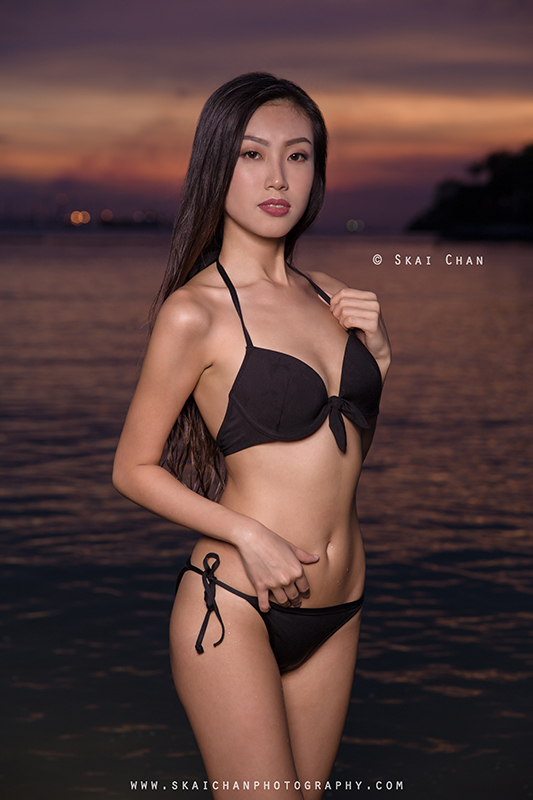
▲ Golden hour at the beach
One of the most popular places to do golden hour photography is at the beach. The result will be dramatic with the sand and water.
However, beach photography means a greater damage to the equipment as fine sand would get into the equipment and the water may drench the equipment. Light stands can get rusted easier. It's much more difficult for the logistics part, especially if the photoshoot is to be done inside the water.
Luck - Beyond the Golden Hours for Good Photos
Unfortunately, outdoor photography depends a lot on luck as well.
There were times that I arranged outdoor photoshoots near the golden hour and the sun was still scorching hot because the sky was clear. At times, the cloud just decided to avoid coming in between the sun and my team.
I would say half an hour after sunrise and before sunset is generally "safe" but the usual photoshoots would require a longer time to accomplish.
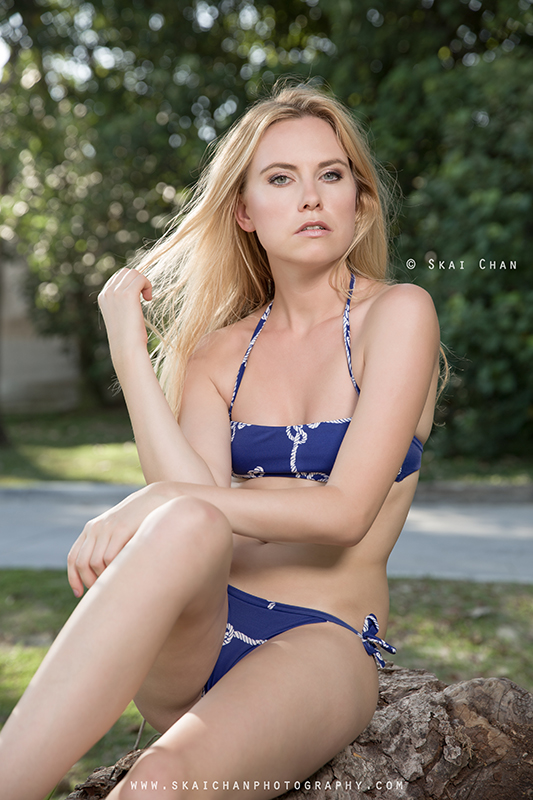
▲ Evening golden hour shoot on a sunny day; taken with 600-watt portable studio strobe at near full power
There was once when I began a beach photoshoot at around 4.30pm, the sun was still very harsh. My 600-watt portable studio light with a large beauty dish attached could hardly overpower the sun. The model had to end the shoot at nearly 6pm. By the time she washed up and we were leaving the place, I started seeing very gentle sunlight. I could only blame on my luck but I was glad that the photographs turned out to be good.
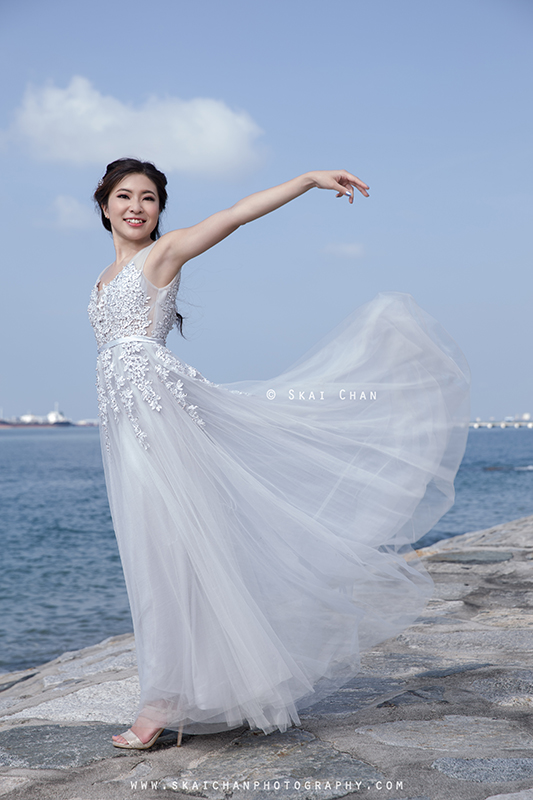
▲ Missed the morning golden hour and battling with the sun using a 600-watt portable studio strobe at full power
For another morning photoshoot that we managed to reach the location near 9am, the sun soon grew furiously strong as the cloud moved away. I had countless unfortunate encounters.
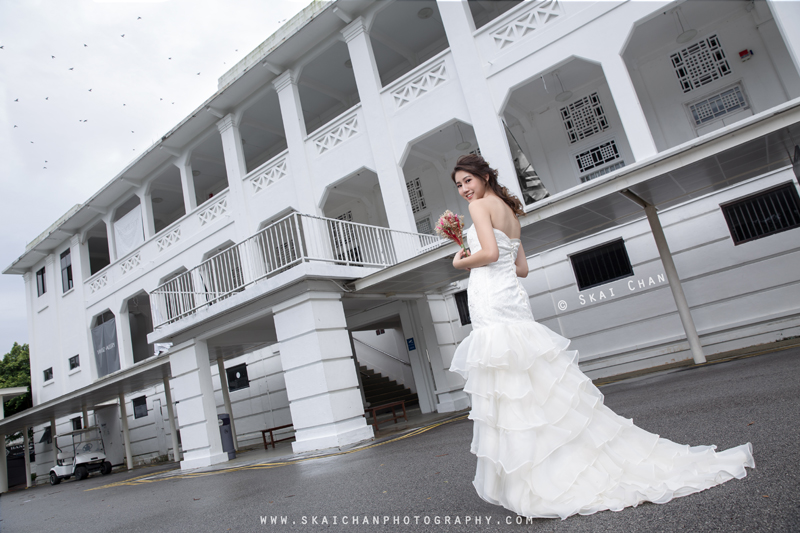
▲ Late morning photoshoot on cloudy day; taken with 600-watt portable studio strobe at full power
On a lucky note, there was once when the photoshoot was dragged till nearly noon time, the grey cloud was covering the sky and my 600-watt portable studio strobe on a huge softbox was able to slightly overpower the sun. It's very draining and damaging to fire any lighting equipment at its full power though, as it would shorten its lifespan.
My conclusion is that it's not always the case that the natural light is always flattering during golden hour because it depends on the weather as well. However, although we can't control the weather, we can't simply depend on luck to get good photographs. I would still stick to doing photoshoots in the golden hours to increase the chance of getting better photographs but also be prepared that the weather may not be always kind.
FAQ
- Where is the best place to watch sunset in Singapore?
- Logically, the sun sets in the West, so the best sunset views should be in West Singapore, where no buildings or trees obstruct the sun as it nears the horizon. Based on my experience travelling around Singapore as a photographer and nature lover, I believe Labrador Nature Reserve and Raffles Marina are the best places to watch the sunset in Singapore.
- Why does high-end photography require golden hour as well?
-
Firstly, lighting equipment has limited power and may not be able to overpower the harsh sun, especially when a large light modifier is attached to produce more flattering light, which simultaneously reduces the efficiency of the light.
Secondly, photographers try to minimise the number of light sources while balancing the overall light with the natural light. As a result, sunlight still impacts the photoshoot.
Next, even if the lighting equipment can overpower the harsh sunlight, it's probably being fired at near-high power. This requires a longer time for the strobe to cycle its power before it can be fired again, slowing the pace of the photoshoot.
Lastly, firing the strobe at high power damages the hardware and greatly reduces its lifespan.
please show some appreciation by following me in Facebook and Instagram.
Do check out my other useful photography tips!
Trust, clarity, and respect—capturing your story with care.
Contact Skai
Updated: Sun, 05 October 2025
 Scan QR to visit this website
Scan QR to visit this website